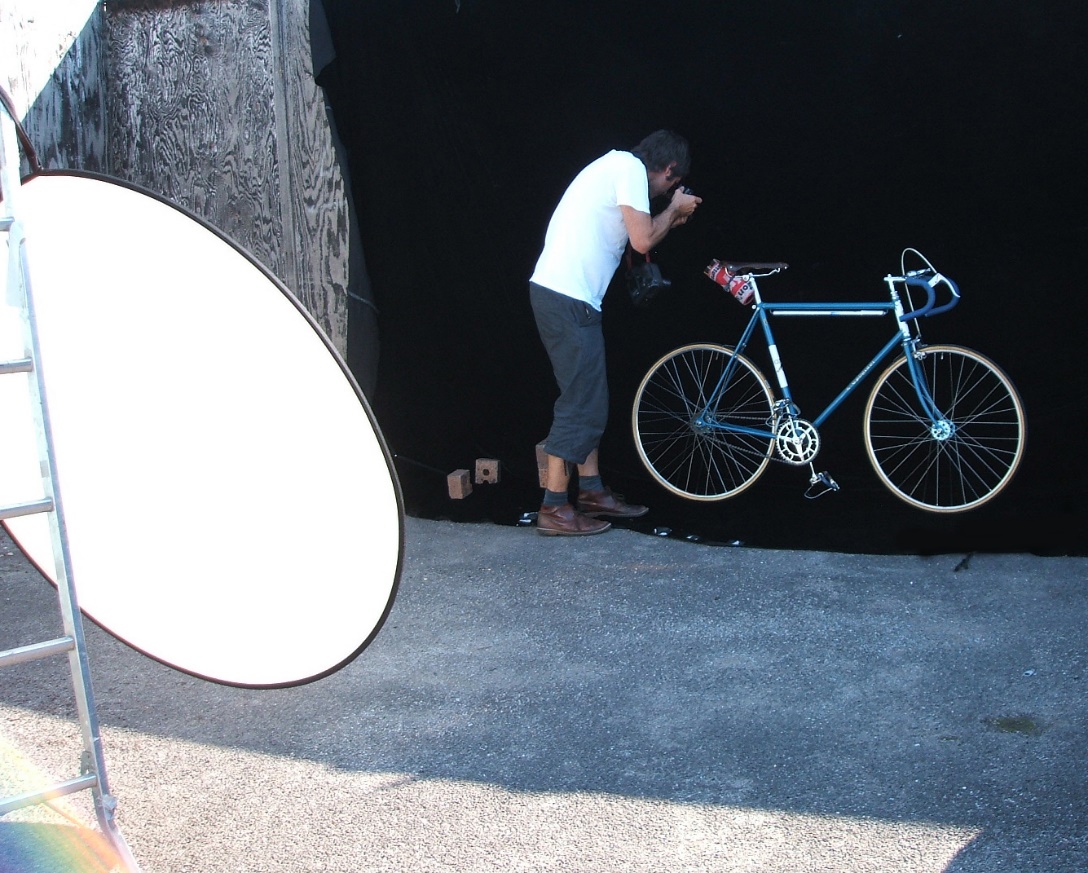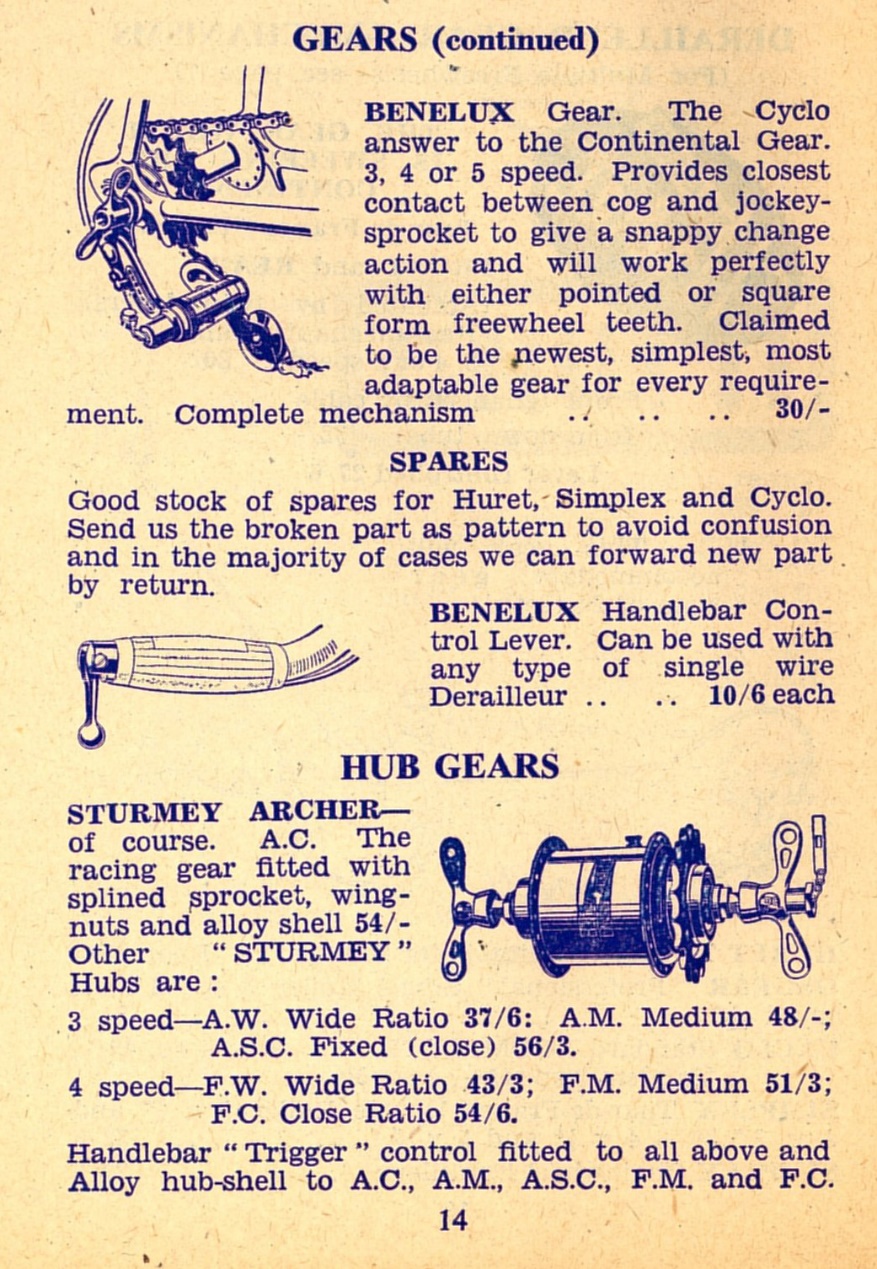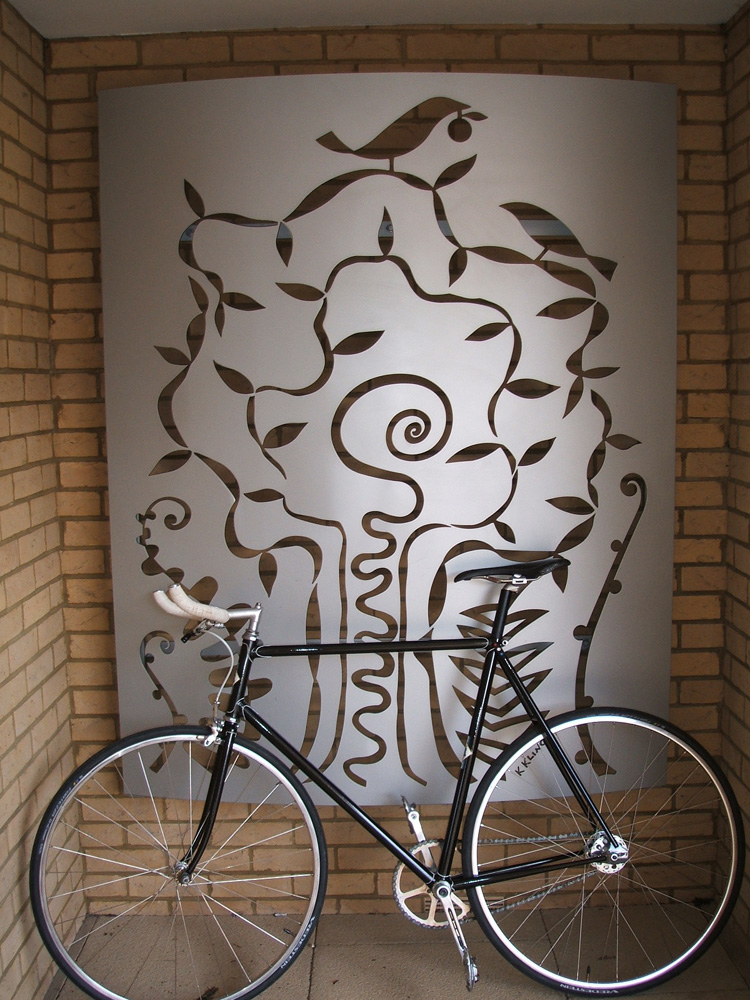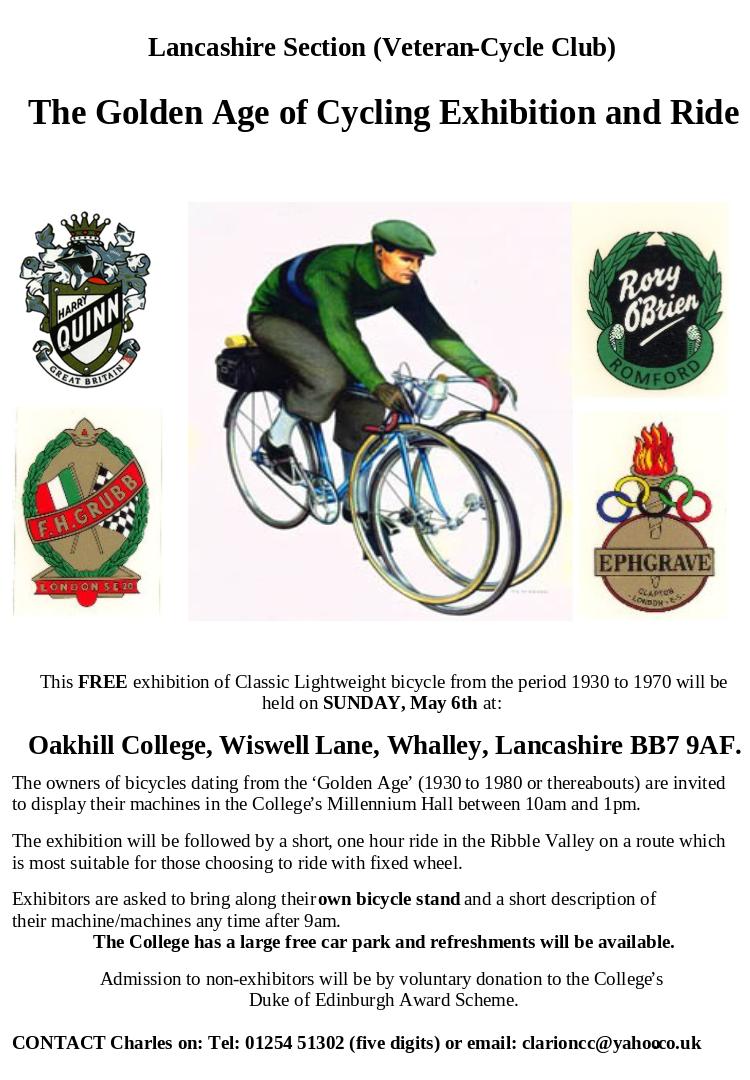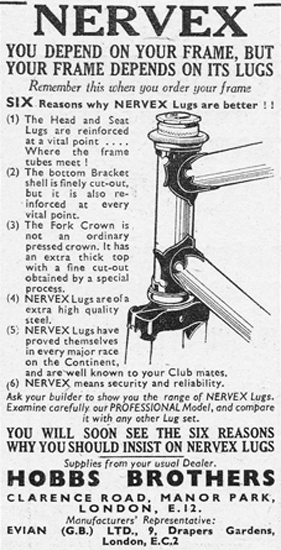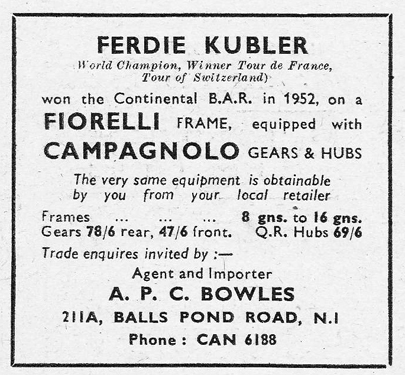Vol. 2, Issue 75 - May / June 2018
Posted: Wednesday 16th May 2018
One of my favourite postcards is the one below produced by the National Clarion showing a typical group of women cyclists on a club run during the 1930s. As this edition goes out on 1 May it is quite appropriate to commemorate the link between cycling, socialism, and the franchise for women.
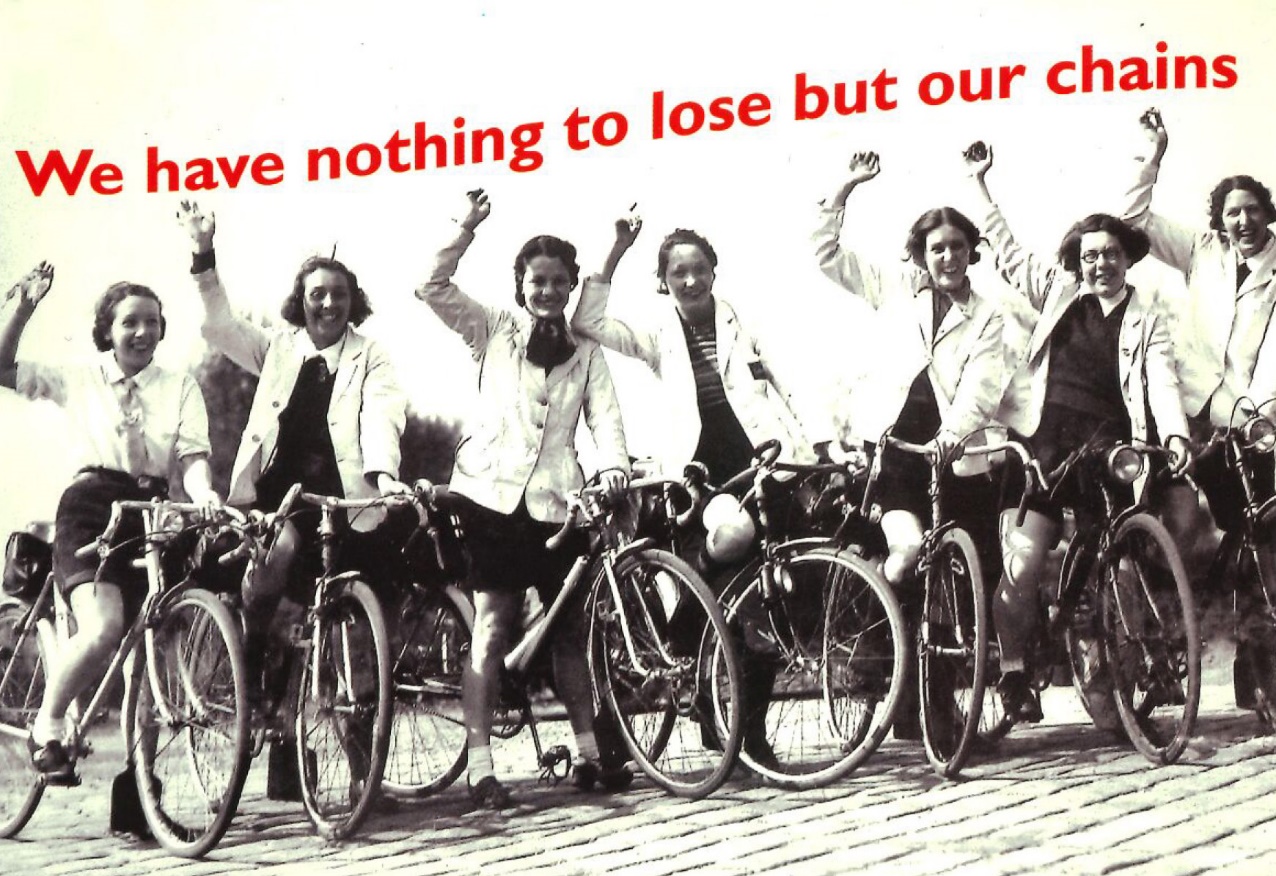
The National Clarion Cycling Club
The Clarion Cycling Club was formed in 1895 after a group of like-minded individuals got together in Birmingham in 1894. It took the Clarion name from Robert Blatchford’s socialist newspaper.
The National Clarion Cycling Club grew during the early 1900’s with 8,000+ members at one time and established sections all over the UK. Working class people were getting on their bikes and using them to explore the countryside. The Clarion was spreading the word and Robert Blatchford’s newspaper to industrial towns and villages. In those days before most working people could own a car the bike gave freedom and fellowship … the Clarion thrived. It survives to this day. Their current web site states:

The Clarion Cycling Club was formed in 1895 after a group of like-minded individuals got together in Birmingham in 1894. It took the Clarion name from Robert Blatchford’s socialist newspaper.
The National Clarion Cycling Club grew during the early 1900’s with 8,000+ members at one time and established sections all over the UK. Working class people were getting on their bikes and using them to explore the countryside. The Clarion was spreading the word and Robert Blatchford’s newspaper to industrial towns and villages. In those days before most working people could own a car the bike gave freedom and fellowship. the Clarion thrived. It survives to this day. Their current web site states:
“We now have some 806 members in 25 sections, which makes us one of the bigger cycling clubs in the country. Bikes still give us our freedom, freedom from the motorcar, the stresses of the rat-race and gives us great friendship, great friends around the country. Whether we race, socialise, tour or meet in cafes, the Clarion is a CLUB, a true club not an association.”
Sunday night debates in the Clarion Cafe on Market Street, Manchester, were a favourite meeting place for Trotskyists, ILP members, Socialists, Communists and other assorted Leftists.
The Clarion, like many clubs, had a network of club houses. There is only one left at Roughlee near Nelson, Lancashire. Only open on Sundays there is an amazing stained-glass window depicting an image of Kier Hardie. Two of the rides at this year’s National Classic Lightweight Rally are using The Nelson Clarion Tea Rooms for a stop,
Below is a picture of Clarion cyclist and suffragette Alice Hawkins, who caused public outrage in Leicester by riding through the town in bloomers, although not on a lightweight as you can see but obviously a fine machine of its era being of a type ridden by well-heeled persons.
The second is of the unveiling of a statue to Alice Hawkins in the Market Square, Leicester in February of this year with members of the National Clarion in attendance.
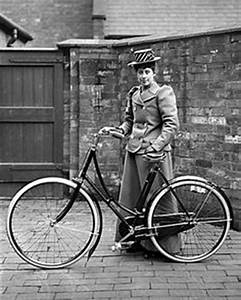
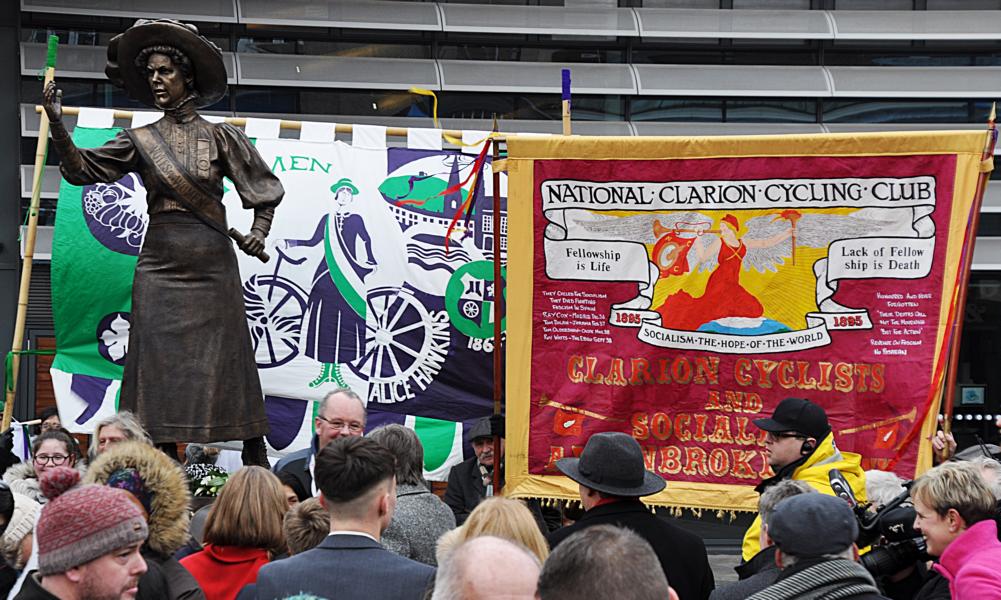
I often wish that I had studio photographic facilities when creating images of bikes for the website or Lightweight News. On the contrary, these days I just use a phone camera and a garage door as a background which is as plain as I can get. It is quite difficult to find a background plain enough to put a complete bike in front of: there is usually a door, a window or a drainpipe in the way. Some people submit images taken indoors and these usually feature at least one set of electrical sockets behind the frame, if not a radiator.
Studios obviously have perfect facilities and professional photographers use photographer’s paper which is a wide roll of plain white paper that can be fixed to a wall with fixing tape and draped down and then out at bottom to give a completely clear background.
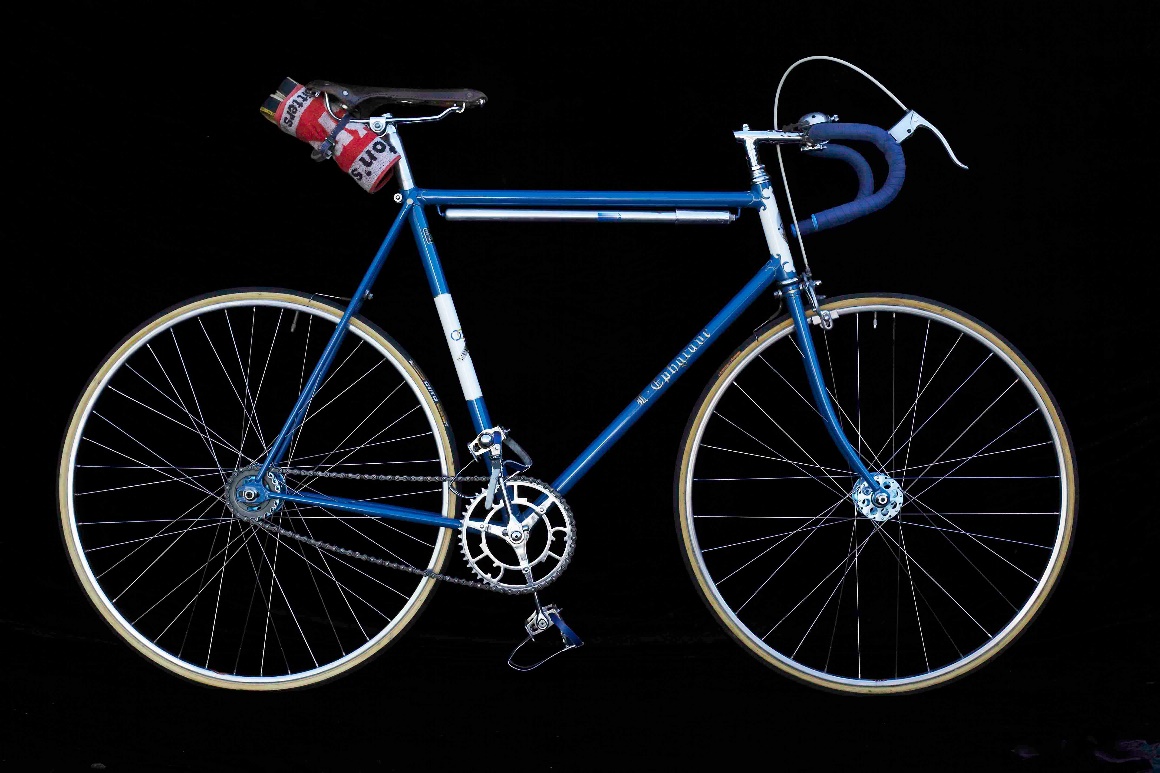
This was my best effort using a phone and the garage door which must have been seen all over the world – probably the most famous door in Cambridge at least. I did Photoshop away the knob which was in the middle of the frame triangle. It is easy to see the change at the angle between the door and the tarmac – submissions often have weeds in this corner at which probably only I bristle. I probably cleared away some weeds before taking this.
The other factor is of course a high-quality camera. I think virtually every professional uses a digital SLR these days. When our Pentax pre-digital SLR stopped working we never did replace it as most of the images we take are when on cycling holidays and we purchased a camera that would fit into a jersey pocket. We soon found that modern phone cameras are so good these days that we use them on every occasion. I once took an image looking down from a mountain to a coastal vista and was amazed to find that the leaves in the foreground were in focus as were the boats in the harbour below. After that holiday I started to use phone cameras for everything.
We have had submissions for the website with images taken in a garden in front of a line of drooping washing and sometimes taken in garages with cupboards, lawnmowers and other bikes in the background. Sunshine can be an enemy as well as a friend as images with a strong shadow of the machine behind can be very distracting. I often spend ages gazing at the sky waiting for a friendly light cloud to cross the sun which usually comes out as soon as I produce a camera – why does this never happen on holiday when sunshine can improve pictures and the holiday no end?
Steel Vintage Cycles in Berlin sell hundreds of frames and complete machines every year and, with this in mind, they have a studio set up with cameras and lighting in one end of their workshop. All they have to do is wheel in the bike and set off the cameras. They of course have a perfect white background.
A few tips from a fellow amateur:
Forget the subject for a few seconds and look at the backgound (see above).
Focus the camera on the chainwheel if you have focussing ability. Unless you do this the resultant image will shows the background in sharp focus but not the bike as the camera is concentrating on the wall and ignoring the one-inch tubes. Even phone cameras may allow you to ‘hold’ a focus and then move from the chainwheel (which has enough area to take a focus) to taking in the whole subject, being careful not to move either forwards or backwards of course.
Kneel in the centre to get the Image at right angles and to centre of frame triangle. Slight deviation from this can result in one wheel looking larger than the other. Obviously, everything else is distorted as well if this happens. It took me a long time to realise that some users of the website took a protractor to the image of a frame to check the angles!
Completely at odds to everything I have said above is the game of ‘bicycle tag’ where the background is as important as the machine. For this to work you have to live in a town with at least say twenty keen enthusiasts who are users of a forum. The game works thus:
Person ‘A’ takes a picture of his bike in front of an interesting item in town.
From the rest of the group, the person who identifies the location and gets there first takes his own machine and replicates A’s image to prove he found it. This is uploaded to the forum by this person who will now be ‘B’ and he finds an interesting place where he takes a picture with his bike in front. This is then uploaded alongside his first – and so on.
Often the images will arouse quite a bit of interest in local sites leading to discussions on the forum between tags. Here is one I took for our local tag in Cambridge:
As it was on a ‘Fixie’ forum I used a fixie scene machine built on a Rondinella track frame, now with dropped bars. The site was ‘The Garden of Eden’ building in Adam and Eve Street, Cambridge.
I sometimes resorted to trickery such as this:
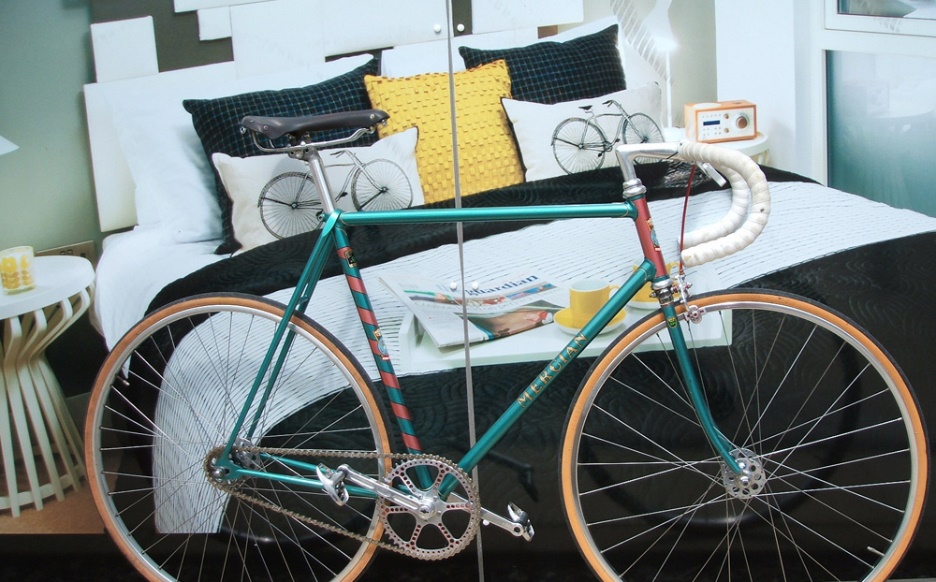
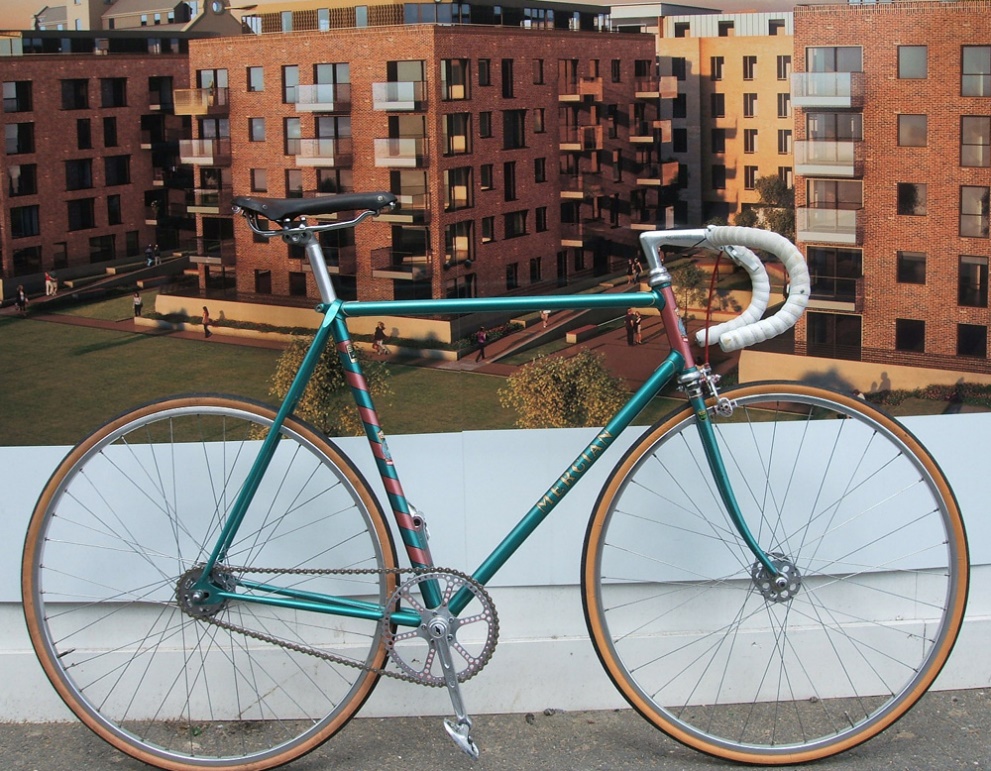
Where the Mercian track frame was posed against a life-size poster advertisement showing the interior of a show flat on a building development. Note the pillows and the Guardian newspaper, well it is Cambridge! I did another in a similar vein using hoardings around another building site:
This was an artist’s impression of the projected development which finished a short way above ground level on hoardings around the site and gave the impression of a low wall overlooking an estate. Mercian Super Vigorelli again.
Continuing my theme of producing extracts from Holdsworth’s Aids to Happy Cycling, this edition covers rear gears sold by Holdsworth in 1951. This will not be a definitive picture of gears for sale in the UK in that year as other distributers sold their own imports.
Re your comment about when Campag Q/R were first introduced into the UK in the last edition of Lightweight News, you may be interested in APC Bowles’ advert in Cycling dated 9th April, 1953. I don’t know how many importers there were for Campagnolo equipment but I know of one more, that was Joe Whisker.
Posted: Wednesday 16th May 2018
This article appears in the following categories.
Upcoming Events
Whether you are looking for a gentle social meet up, or a 100-mile ride browse the community’s upcoming events and plan your next weekend outing.

